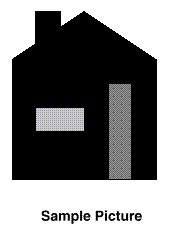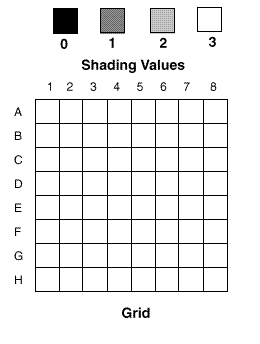

| The image created with this activity is a crude representation of the original picture. The reason for this is that the initial grid contains only 64 squares. If there were many more squares, each square would be smaller and the image would show finer detail. You may wish to repeat this activity with a grid consisting of 256 squares. However, increasing the number of squares will requires more class time. |
This activity shows how astronomical
satellites such as the Hubble Space
Telescope produce simple black and white
images. With the HST, the grid consists of
more than 2.5 million pixels and they are
shaded in 256 steps from black to white
instead of just the 4 shades used here. Color images of an object are created by the HST with color filters. The spacecraft |

|

|
| Make a copy of this picture on white paper and a copy of the grid to the right on overhead projector transparency plastic for student B in each group. | Make a copy of the grid on white paper for student A in each group. Make a transparency of this grid for student B in each group. |